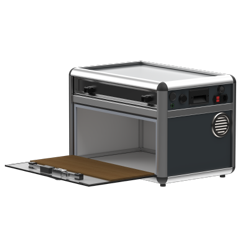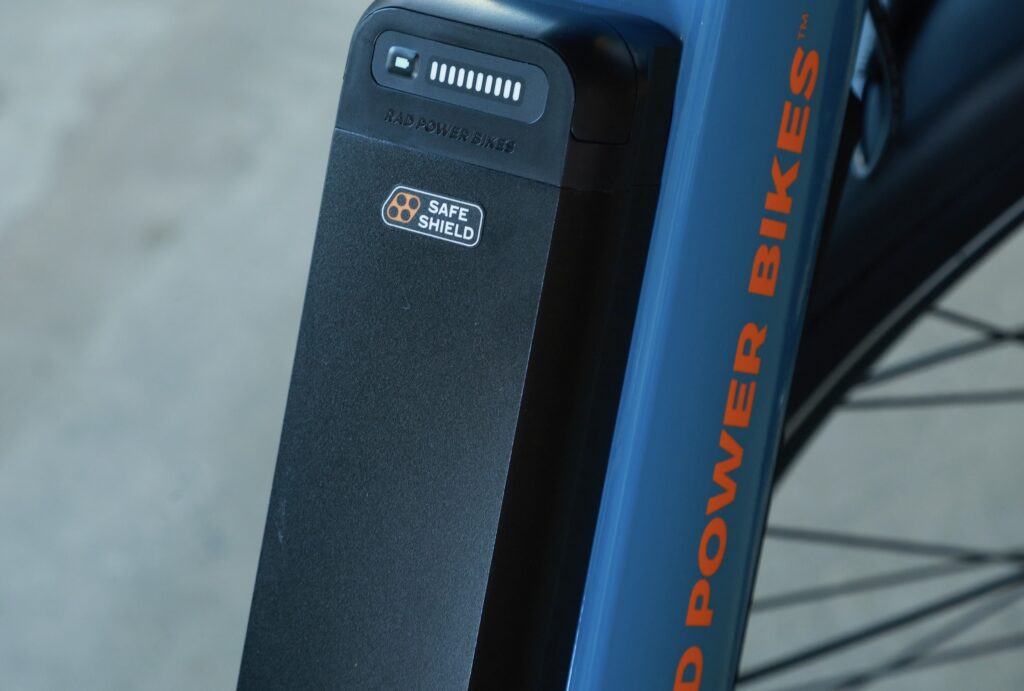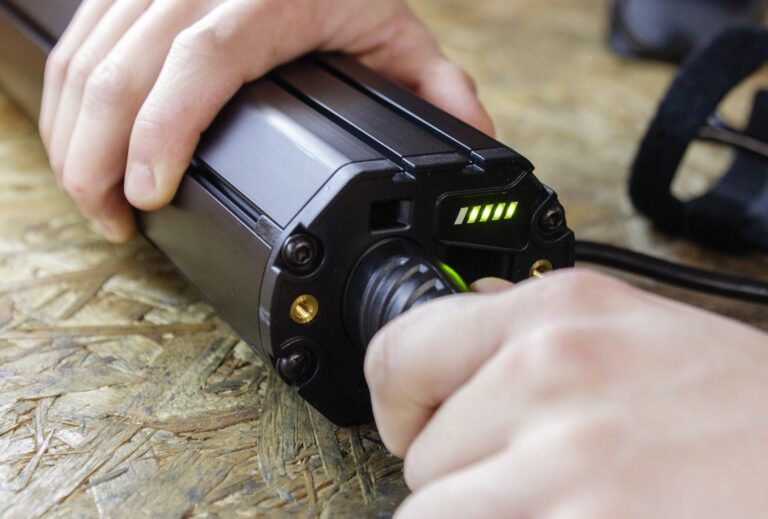The San Francisco Fire Marshal and San Francisco Board of Supervisors have approved a new storage device to improve lithium-ion battery safety. The RACLAN Box, manufactured by Lithium Containment Solutions, keeps a battery locked away while charging. It also has special cooling mechanisms to prevent an e-bike battery fire from spreading outside the box.
Lithium-ion Issues in San Francisco
San Francisco has been increasing e-bike ridership with its Bay Wheels program, which will eventually add 2,700 new rideshare e-bikes throughout the region. But with that increase in ridership has also come a boost in e-bike battery fires.
In 2022, there were a record 58 e-bike battery fires. That’s over double the battery fires in 2019 — and nearly five times those in 2018. Over the last decade, San Francisco rechargeable device fires caused $10.6 million of property damage, 13 injuries, and one death.
San Francisco’s e-bike battery fires did drop to 41 in 2023, but there’s still much room for improvement. Specifically, the RACLAN Box can help with that.
How the RACLAN Box Will Help

San Francisco approved the RACLAN Box to help e-bike shop owners comply with new e-bike safety ordinances. The San Francisco Fire Code requires a fire barrier or battery cabinet when charging five or more battery packs — a common occurrence in a place like a bike shop.
As an approved device, the RACLAN Box satisfies this requirement. It’s built to keep e-bike batteries safe when charging and storing them, reducing the need for shops to build a separate charging room or install sprinklers.

Lithium Containment Solution’s RACLAN Box works by storing the battery and its charger. The external power supply turns on once you close the door with the pivoted handle.

An electric system monitors the charging process and detects any dangerous rise in temperature. If the temperature increases, the system emits both visual and audible alarms to warn you and sprays a cooling agent onto the batteries.
Put together, these steps stop fires before they start.
Industry Impact
A charging containment device like the RACLAN Box can go a long way in making the e-bike industry safer. Such an innovation marks a growing segment of the e-bike and EV industries filled with cutting-edge battery research and advancements.
For example, Rad Power Bikes recently developed a new UL-listed Safe Shield battery that prevents combustion and sparks. The resin lining between every cell shuts down thermal events immediately, so heat can’t spread to the rest of the battery. This keeps you safer and helps your battery last longer.

CES 2024 also placed a heavy emphasis on battery-related innovation. In particular, leaders are pushing for recycling and remanufacturing electric batteries to prevent fires. Mocuratec also presented the Li-juvenator, a device that uses pulse charging tech to extend the lifespan of lithium-ion batteries and prevent the risk of explosions.
User Impact
With increasing innovations in battery safety, riders also need to consider how they care for their batteries. Lithium-ion batteries can pose a fire risk, but proper e-bike battery care can mitigate much, if not all, of that risk.
To prove this point, we’ll share a story from one of our readers. Dick Hewitt, a retired electrical engineer and League of American Bicyclists member and instructor, was consulted about a battery fire that happened in a garage.
He noticed the e-bike battery had been charred, but its case wasn’t compromised — suggesting the battery itself did not start the fire.
After some investigating, he determined that the e-bike’s owner inadvertently started the fire by leaving the live end of the charging cord on the garage floor. Snow eventually fell from the car, melted, and formed a puddle of water. That water then made contact with the live end of the cord and shorted out the outlet, which caused the fire.
In other words, the fire wouldn’t have happened if the owner hadn’t been negligent.
Following battery charging protocols is one big way to decrease danger, but so is choosing a battery with the proper certification. For example, in San Francisco, all powered mobility devices must meet UL 2849, UL 2272, EN 15194, or EN 17128 standards.
Making the Future of E-Bikes Safer
There are definitely pros and cons of e-bike batteries. However, when local governments like San Francisco mandate safety regulations, it can greatly reduce the risk of fires or explosions.
As long as owners follow these regulations and use common sense when dealing with their e-bikes, the batteries shouldn’t pose too large of a fire hazard.
Enjoy this story? Sign up for the eBikes.org newsletter for more news updates.



